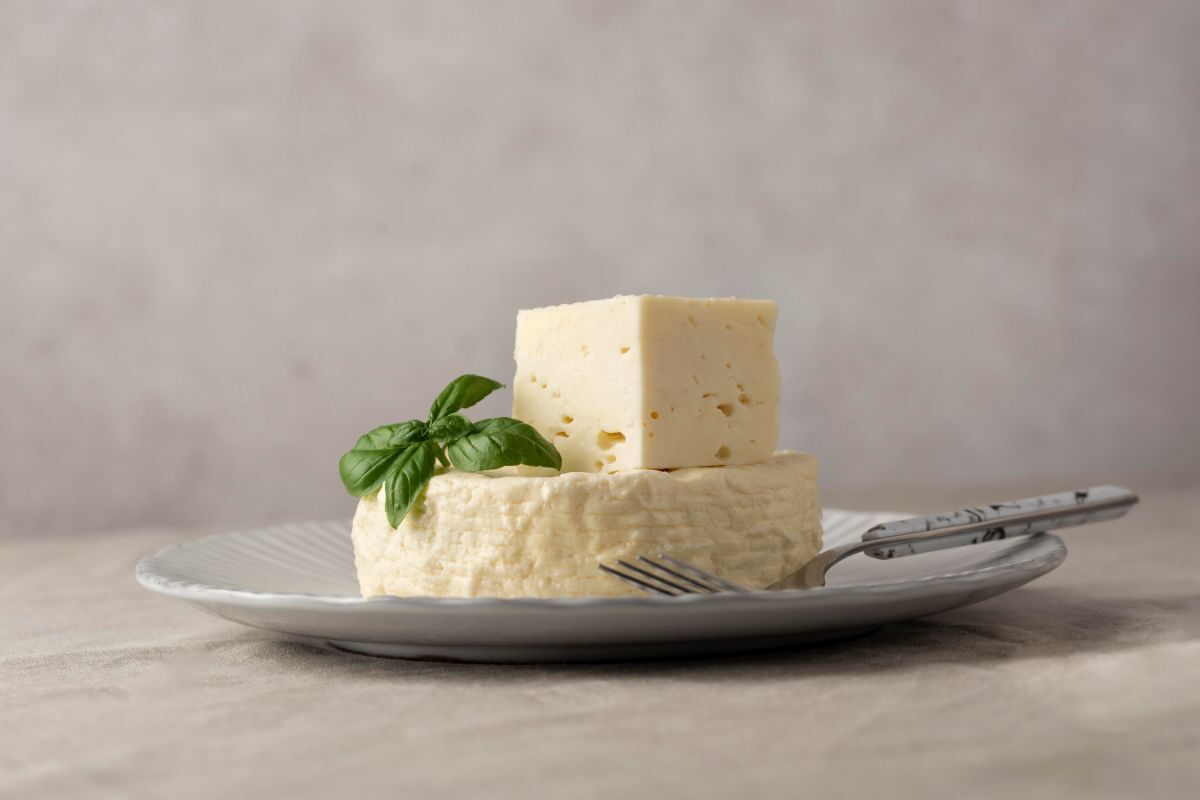In culinary excellence, few ingredients command the respect and admiration of cultured unsalted butter. Vermont Creamery Cultured Unsalted Butter epitomizes the art of butter-making, showcasing a perfect blend of tradition and innovation. This article explores the distinct characteristics of Vermont Creamery’s cultured unsalted butter, highlighting its meticulous production process, quality assurance, nutritional benefits, and why it stands out in the butter market.
Artistry of expert butter makers
Vermont Creamery’s cultured unsalted butter is a testament to the artistry of expert butter makers. The company enhances the butter’s flavor profile by introducing live bacterial cultures to fresh Vermont cream. This fermentation process, which occurs overnight, imparts a creamy texture and complex taste with notes of buttermilk and hazelnuts. The result is a Vermont Creamery Cultured Unsalted Butter that is both rich and nuanced, elevating any dish it accompanies.
What Is Cultured Butter?
Cultured butter is crafted using a technique reminiscent of traditional European methods. Unlike American butter, which is made from sweet cream, cultured butter begins with pasteurized cream and is fermented with live bacterial cultures. This fermentation process develops a distinctive flavor with tangy and slightly nutty notes. After resting in a vat, the cream is churned into butter, resulting in a product with a higher butterfat content and a more robust flavor profile.
Difference between Regular butter and Cultured butter
Regular butter is made from pasteurized cream and has a mild, creamy flavor. Cultured butter, conversely, is fermented with bacterial cultures, giving it a tangy, complex flavor. Cultured butter typically has a higher butterfat content and a denser, creamier texture than regular butter.
Difference between salted and unsalted butter
Salted butter contains added salt, which enhances flavor and extends shelf life. Unsalted butter has no added salt, allowing for better control of seasoning in recipes and providing a purer butter taste.
Texture and Composition of Vermont Creamery Cultured Unsalted Butter
Vermont Creamery Cultured Unsalted Butter typically contains a higher butterfat content, ranging from 82% to 85%. This higher fat content and lower moisture content result in a denser and creamier texture. The reduced moisture content also contributes to its flakiness in pastries and a finer crumb in cakes, making it a preferred choice for baking where texture is crucial.
Flavor Profile
Vermont Creamery Cultured Unsalted Butter is distinguished by its complex, tangy flavor profile. The fermentation process develops distinctive notes of buttermilk and hazelnuts, giving it a more robust taste. This tanginess and depth of flavor make it ideal for use in recipes where the butter’s taste is prominent, such as in butter cookies, croissants, and other baked goods where a more sophisticated butter flavor can enhance the final product.
The Production Process
Receiving and Pasteurization
Fresh cream from Vermont cows is received at Vermont Creamery and undergoes pasteurization. This step ensures the cream is free from harmful bacteria while preserving its essential qualities.
Culturing
After pasteurization, live bacterial cultures are meticulously added to the cream. This step is crucial as it initiates the fermentation process, which develops the butter’s unique taste and texture.
Fermentation
The cream rests in a vat, thickening and acquiring complex flavors. This fermentation period contributes to the butter’s rich, tangy profile.
Churning
Following fermentation, the cream is churned into butter. The process is akin to winemaking, where patience and careful handling yield a superior product.
Nutritional Values
Here is a detailed nutritional table for Vermont Creamery Cultured Unsalted Butter, based on a serving size of 1 tablespoon (14g):
| Nutrient | Amount per Serving (1 tbsp) | % Daily Value* |
|---|---|---|
| Calories | 100 | 5% |
| Total Fat | 11g | 14% |
| – Saturated Fat | 7g | 35% |
| – Trans Fat | 0g | — |
| – Polyunsaturated Fat | 0.3g | — |
| – Monounsaturated Fat | 3g | — |
| Cholesterol | 30mg | 10% |
| Sodium | 0mg | 0% |
| Total Carbohydrates | 0g | 0% |
| – Dietary Fiber | 0g | 0% |
| – Sugars | 0g | — |
| Protein | 0g | 0% |
| Vitamin A | 90mcg | 10% |
| Calcium | 2mg | 0% |
| Iron | 0mg | 0% |
Note:
- Percent Daily Values are based on a 2,000 calorie diet.
- Vermont Creamery Cultured Unsalted Butter is rich in butterfat, enhancing flavor and texture in cooking and baking.
Suitable for Lactose Sensitives
Nutritionally, Vermont Creamery’s cultured unsalted butter is a rich source of butterfat, containing 82% butterfat. It also offers a notable reduction in lactose due to the fermentation process. This makes it more tolerable for those with lactose sensitivities. Each serving of butter provides essential fats, though it should be consumed in moderation due to its high saturated fat content.
Award-Winning Excellence
The quality of Vermont Creamery’s cultured butter has not gone unnoticed. It has garnered several accolades, including:
- Bronze at the World Dairy Expo Championship Cheese Contest (2022)
- 3rd Place at the American Cheese Society Awards (2022)
- Silver at the SOFI Awards (2020)
- Gold at the International Cheese & Dairy Awards (2023)
These awards underscore the butter’s exceptional quality and the company’s dedication to producing top-tier dairy products.
What is unique about Vermont Creamery’s cultured unsalted butter?
Vermont Creamery Cultured Unsalted Butter stands out for several reasons:
-
Made in Vermont
This butter is produced using fresh cream sourced from Vermont, a region renowned for its high-quality dairy. The cream from cows not treated with recombinant bovine somatotropin (rBST) ensures the butter is free from artificial hormones and antibiotics.
-
Cultured Process
The butter undergoes a culturing process, where beneficial bacteria are added to the cream before churning. This fermentation enhances the butter’s flavor, giving it a tangy, rich profile that adds depth to culinary dishes.
-
Higher Butterfat Content
Vermont Creamery Cultured Unsalted Butter has a higher butterfat content than regular butter. This characteristic makes it ideal for baking, as it contributes to flakier pie crusts and richer textures in baked goods. Its creamy consistency and flavor also perform well for sautéing and drizzling.
-
Versatile Use
Overall, its origin, production process, high quality and high butterfat content make Vermont Creamery Cultured Unsalted Butter a premium choice for baking and cooking. The butter is excellent for a variety of culinary applications. It can be used to elevate dishes such as roasted corn on the cob, add a flavorful touch to sautéed steaks, or spread over fresh-baked bread, enhancing the taste and texture of each.
Culinary Applications
Cultured unsalted butter can be used in a variety of culinary applications. Its higher butterfat content and lower moisture level make it ideal for baking, adding a finer crumb texture to cakes and creating flakier pastry layers and many other food items. It also enhances the flavor of savory dishes, such as searing meats or enriching seafood.
Quality Assurance
Vermont Creamery’s commitment to quality assurance is evident in every batch of cultured butter. As a Certified B-Corporation, the company adheres to rigorous social and environmental performance standards. The butter is also Certified Gluten-Free, Kosher Dairy, and proudly made in Vermont. Furthermore, Vermont Creamery emphasizes farm-powered practices, ensuring sustainable and ethical production methods.
Storage
Regarding storage, cultured butter should be kept in the refrigerator to maintain freshness. It can be frozen for up to four months without compromising quality if not used within the recommended time frame.
Conclusion
Vermont Creamery’s cultured unsalted butter represents the pinnacle of artisanal butter-making. Its rich, creamy texture & complex flavor profile result from a meticulous production process combining tradition and innovation. With impressive quality assurance practices and nutritional benefits, this butter is a distinguished choice for discerning culinary enthusiasts. Whether used in baking, cooking, or enjoyed on toast, Vermont Creamery’s cultured unsalted butter is a remarkable addition to any kitchen.









